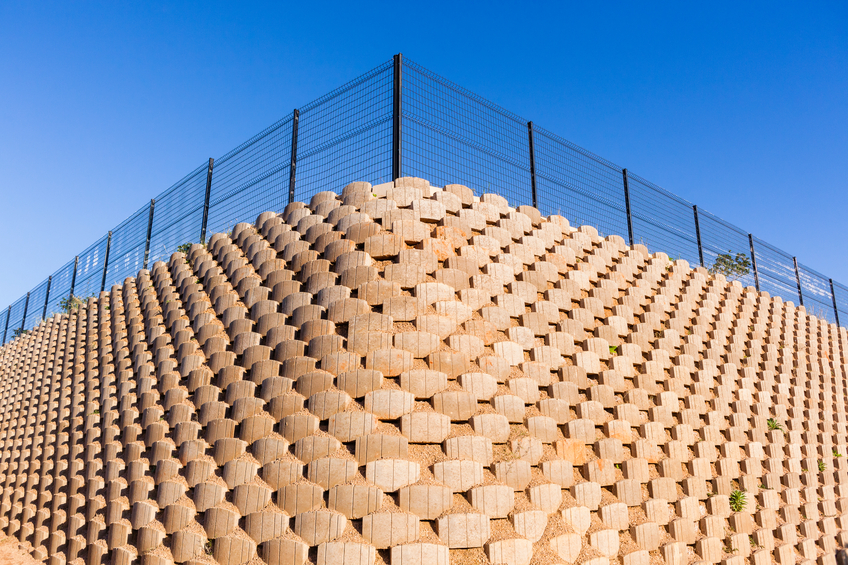Retaining Walls for Non-Geotechnical Engineers

This online engineering PDH course discusses the method of calculating the active earth pressure using the Rankine and Coulomb methods. The course also outlines the method used to calculate the factors of safety for sliding, overturning and bearing capacity, which are three elements required for retaining wall design. A basic example of the calculations for the Rankine method is provided.
Retaining walls are structures that support backfill and allow for a change of grade. For instance a retaining wall can be used to retain fill along a slope or it can be used to support a cut into a slope. Retaining wall structures can be gravity type structures, semi-gravity type structures, cantilever type structures, and counterfort type structures. Walls might be constructed from materials such as fieldstone, reinforced concrete, gabions, reinforced earth, steel and timber. Each of these walls must be designed to resist the external forces applied to the wall from earth pressure, surcharge load, water, earthquake etc.
This 2 PDH online course is intended for a wide range audience and in particular, the non-geotechnical engineer and is not intended as an exhaustive review of the subject. The objective of this course is to familiarize primarily the non-geotechnical engineer with methods for calculating the active earth pressure force against a retaining wall and for assessing its stability with respect to sliding, overturning and bearing capacity.
This P.Eng. continuing education course is intended to provide you with the following specific knowledge and skills:
- Calculating the lateral earth pressure force.
- Calculating factors of safety for overturning, sliding and bearing capacity.
Upon successful completion of the quiz, print your Certificate of Completion instantly. (Note: if you are paying by check or money order, you will be able to print it after we receive your payment.) For your convenience, we will also email it to you. Please note that you can log in to your account at any time to access and print your Certificate of Completion.